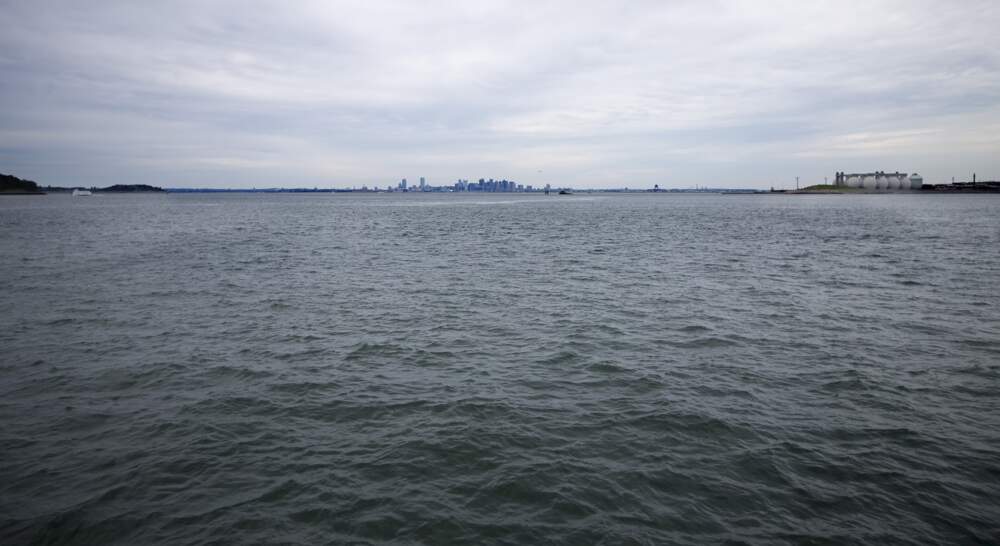Advertisement
London Calling: Human-powered row sets off from Boston for London
Resume
A crew of four rowers is set to sail from Boston to London on Saturday in what is believed to be the first human-powered row directly across the route.
U.S. Army veteran Bryan Fuller will captain the crew, and this isn’t his first time making a journey like this. Twelve years ago, he rowed from The Canary Islands of Spain near Morocco to the Caribbean nation of Barbados.
There are new challenges this time, namely harsh currents and a warming climate. But Fuller says he isn’t feeling nervous to set out and sees the lead-up to the journey more as a to-do list to get everything done in time. Fuller says the song “Where Is My Mind?” by The Pixies encapsulates the way he feels when he’s on a long journey like this.
The boat is 28 feet long and there will be two teams on it: One bow cabin and one aft cabin. The rowers will switch off, taking one to four-hour long shifts at a time.
“I liken this to astronauts all the time. And people are like, ‘Really?,’” Fuller says. “We're in a small capsule, totally isolated. Everything we have, we bring with us. The crew is specially trained to do this particular thing. And it's somewhat dangerous.”
5 questions with Bryan Fuller
Why did you decide to do a route like this again?
“The first time I did it to support a rowing program that I had fallen in love with, a veteran rowing program that helped veterans with PTSD and they treated it through a really wonderful way.
“I was like, this is such a great program. We should do something to promote that program. I saw on the news that a team had rowed across the Atlantic Ocean and set the world record. And I thought, ‘boy, that would be a great springboard to talk about this program.’ Fast forward 12 years, and now my whole life is rowing.
“I teach crew. I teach indoor rowing. I still love this military veteran program. I heard it wasn't doing as well, and I thought, ‘well, you know what? I'm in a position right now. I could do this again.’
“I talked it over with a bunch of people, and we decided if I did a different route, it would be a whole different experience for me. I get to be the captain this time, and I would have the opportunity to do the northern route, having already done the southern route.”
What does it mean to captain this row?
“The first time I did a row, I joined another boat. The captain was very disorganized.
“My job as captain is to have a much more organized boat. You're responsible for food. You're responsible for navigation. You're responsible for communications, and I will make sure that everybody's going to be safe.”
How does the North Atlantic route differ from the South Atlantic route you’ve taken before?
“The North Atlantic is far more difficult than the South Atlantic. Two reasons: One, weather, and the other is currents. There's a natural current that runs from Africa to South America. So if you just sat in a bathtub and pushed it off, in about 75 days you'd land in South America.
“The North Atlantic is far less forgiving. So it's a bigger challenge. It's a whole different kind of thing. It's actually more like three or four, maybe even five different rows, all combined into one where the South Atlantic, you could push off and eventually you'd wind up in Barbados.”
What is the protocol if something goes wrong?
“You have to engineer your way out of it. It could be something small, like, ‘okay, something hit the boat and there's a leak in the boat.’ We have tools to fill the leaks. It could be something like an electrical system goes down. Do we have stuff to fix the electrical system?
“We have about four or five different ways to signal for SOS, all separate from each other. So that's really good. And we're in a fairly busy lane, so there's probably never anybody further away than say 20 or 30 miles.”
What do you do to keep your mind busy on the journey?
“Books on tape, a little Taylor Swift. Obviously, music peaked in the late 1990s. So there'll be a lot of that, but you can do a variety of things.
“Last time I rode across, I spent a ton of time just counting in my head. Because I thought that was very fascinating. How high could I count in two hours? And then at some point, I started writing a children's story in my head.”
Follow along here.
This segment aired on May 31, 2024.


